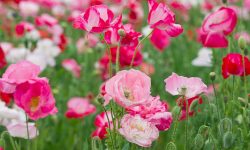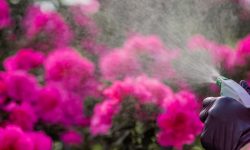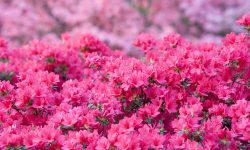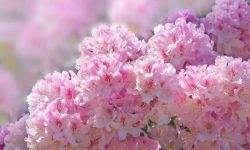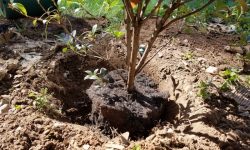Bougainvillea is a stunning plant known for its vibrant bracts and vigorous growth. Its colorful flowers can transform any garden, trellis, or patio into a lively, eye-catching space. However, to achieve continuous blooming and maintain a healthy structure, proper trimming is essential. Without regular pruning, the plant may become leggy, overgrown, or less floriferous, diminishing its visual impact.
Understanding when and how to trim bougainvillea ensures both beauty and plant health. From seasonal pruning techniques to daily care practices, mastering these methods helps gardeners encourage abundant flowers, strong stems, and lush growth. With the right knowledge, anyone can enjoy a thriving, colorful bougainvillea year-round.
Understanding Bougainvillea Growth
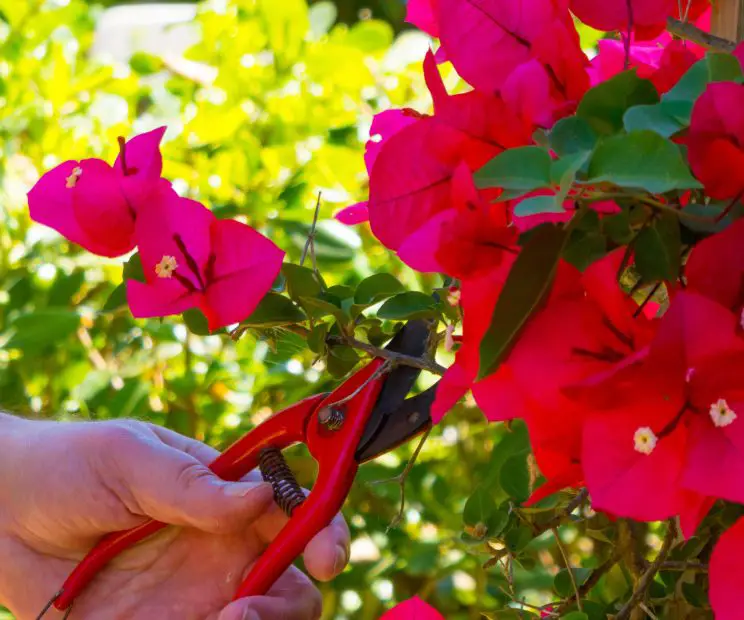
Bougainvillea grows rapidly and produces long, thorny stems. These stems need regular pruning to prevent overcrowding. Vigorous growth can block sunlight from reaching inner branches. Proper trimming allows air circulation and reduces disease risk. The plant responds well to shaping and controlled pruning. Removing old or dead stems encourages new flowering branches. Bougainvillea blooms on new growth, so pruning stimulates vibrant flowers. Observing growth patterns helps determine the best time and method for trimming. Gardeners should also consider plant size, location, and desired shape before pruning.
The plant produces bracts, which surround tiny flowers. These bracts create vivid colors in spring and summer. Without trimming, older stems may produce fewer blooms. Proper trimming directs the plant’s energy toward new shoots and flowers. Growth may slow slightly after pruning, but results are stronger flowers and healthier foliage. Gardeners should monitor seasonal growth and adjust trimming frequency. Pruning also enhances the aesthetic appeal of trellises, fences, and containers. Understanding bougainvillea’s growth cycle helps achieve consistent flowering.
When to Trim a Bougainvillea
Timing is crucial when trimming bougainvillea to ensure healthy growth and vibrant blooms. The best time to prune is just after the main flowering period. Trimming spent blooms and old growth at this time directs the plant’s energy toward new shoots. This helps stimulate additional flowering cycles and encourages a fuller, more compact shape. Pruning too early or during peak bloom may reduce the number of flowers and stress the plant.
Seasonal changes also influence the ideal trimming schedule. In tropical climates, bougainvillea may bloom year-round, allowing light maintenance pruning at any time. In cooler regions, it is best to prune after winter or before the active growing season begins in spring. Avoid trimming during frost periods or extreme heat, as this can damage stems and hinder recovery. Regularly observing growth patterns and flowering cycles helps gardeners determine the most effective trimming periods for their specific climate and plant variety.
Light maintenance pruning can be done throughout the year to control size and shape. Removing small, weak, or overcrowded branches ensures proper air circulation and sunlight penetration. This prevents disease and promotes healthy foliage. Combining major post-bloom pruning with light year-round trimming maintains a bougainvillea that is both aesthetically pleasing and consistently flowering. By understanding the plant’s growth cycle and seasonal needs, gardeners can enjoy vibrant, long-lasting blooms while preserving a strong, healthy structure.
Tools Needed for Trimming
Proper tools are essential for trimming bougainvillea safely and effectively. Sharp pruning shears allow clean cuts on thin stems, minimizing damage and promoting faster healing. For thicker branches, long-handled loppers or pruning saws provide leverage and make cutting easier. Using the correct tools prevents unnecessary stress on the plant and helps maintain its overall health.
Protective gear is equally important. Bougainvillea has sharp thorns that can injure hands and arms. Wearing gloves, long sleeves, and safety glasses protects against scratches and debris. Ensuring proper protection allows gardeners to work confidently and efficiently, reducing the risk of accidents while handling thorny branches.
Regular maintenance of trimming tools enhances performance and longevity. Clean tools before and after each use to prevent the spread of disease. Disinfecting blades with alcohol or bleach solution reduces the risk of infecting healthy stems. Keeping tools sharp ensures precise cuts, which encourages strong new growth and vibrant flowers. By using the right tools and protective gear, gardeners can safely shape bougainvillea and enjoy consistent, healthy blooms.
Step-by-Step Trimming Guide
Preparing the Plant
Before trimming bougainvillea, preparation is essential to ensure safety and effective pruning. Start by inspecting the plant for dead, diseased, or overgrown branches. Choose a day with dry weather to reduce the risk of infection and slipping on wet soil. Clear the surrounding area to provide ample space for movement and tool handling. Gather all necessary tools, including sharp pruning shears, loppers, and protective gloves. Wearing long sleeves and safety glasses protects against thorns and debris.
Hydrating the plant a day before trimming can make stems more flexible and easier to cut. Mark areas that require heavy pruning or shaping to avoid removing too much growth accidentally. Understanding the plant’s growth pattern helps in planning cuts strategically. Preparation not only ensures a smoother trimming process but also promotes healthier regrowth and abundant flowering after pruning. Properly prepared plants respond better to trimming and recover faster from cuts.
Removing Dead or Weak Stems
Removing dead or weak stems is a critical step to maintain bougainvillea health. Dead branches can harbor pests and diseases, which may spread to healthy parts of the plant. Weak or damaged stems divert energy from producing vibrant flowers and strong growth. Identify brown, brittle, or shriveled stems and cut them at the base using sharp pruning shears or loppers.
Regularly removing these stems improves air circulation and sunlight penetration within the plant. This stimulates stronger growth and encourages blooming on new, healthy branches. Focusing on removing problem stems reduces the risk of infection and ensures the plant allocates energy efficiently. Over time, consistent removal of dead or weak stems results in a bushier, more vibrant bougainvillea with stronger structure and more abundant flowers.
Shaping and Size Control
Shaping bougainvillea enhances its aesthetic appeal and keeps growth manageable. After removing dead or weak stems, identify areas that require size adjustment or shaping. Trim long, leggy branches to maintain a balanced, visually appealing form. Shaping can also direct growth along trellises, fences, or container edges.
Controlling the plant’s size prevents overcrowding, reduces disease risk, and allows better sunlight exposure to inner branches. Regular shaping encourages compact growth and continuous flowering. Combining strategic cuts with careful observation ensures the bougainvillea maintains both a healthy structure and vibrant bracts. By controlling size and form, gardeners can achieve a striking, well-maintained plant suitable for any landscape.
Aftercare for Bougainvillea
Proper aftercare is essential to ensure bougainvillea recovers quickly from trimming and produces vibrant blooms. Water the plant deeply but allow the top inch of soil to dry between watering sessions. Overwatering can lead to root rot, while underwatering may stress the plant and slow growth. Container plants may require more frequent watering than garden-planted bougainvillea, so monitor soil moisture regularly.
Fertilization plays a key role in post-trimming recovery. Use a balanced fertilizer or one higher in phosphorus to encourage flower formation. For container-grown plants, liquid fertilizers provide quick nutrients, while slow-release fertilizers are ideal for garden beds. Avoid excessive nitrogen, which promotes leafy growth over flowers. Regular feeding ensures the plant has the energy to develop new shoots and maintain strong, healthy foliage.
Maintaining proper sunlight exposure and pest management is equally important. Bougainvillea thrives in full sun, requiring at least 5–6 hours of direct light daily. Inadequate sunlight can reduce bloom production and weaken the plant. Inspect regularly for aphids, spider mites, and other pests, and treat infestations promptly with insecticidal soap or neem oil. By following these aftercare practices, gardeners can enjoy a strong, healthy bougainvillea that blooms abundantly and remains visually striking throughout the growing season.
Sunlight Requirements
Bougainvillea thrives in bright, direct sunlight, which is essential for healthy growth and abundant flowering. Ideally, the plant should receive at least five to six hours of sunlight daily. Adequate sun exposure stimulates bud formation and ensures that bracts develop vibrant colors. Without sufficient light, the plant may produce fewer blooms, display leggy growth, or have weak stems. Positioning bougainvillea in a sunny spot, whether in a garden bed or container, is crucial for maximizing flowering potential.
Sunlight also affects the plant’s energy distribution. Consistent exposure encourages strong stems, compact growth, and overall plant vigor. Container plants may require rotation to ensure all sides receive equal sunlight. In extremely hot regions, partial afternoon shade can prevent leaf scorch without significantly reducing bloom quality. Gardeners should observe how the plant reacts to different lighting conditions and adjust placement accordingly.
Proper sunlight combined with other care practices ensures the plant’s resilience and vibrant appearance. By providing ideal light conditions, gardeners promote continuous flowering, stronger stems, and bright, colorful bracts. Maintaining consistent sunlight exposure throughout the growing season helps bougainvillea thrive and resist stress from environmental fluctuations, ensuring a stunning display year-round.
Fertilizer and Nutrients
Providing proper fertilizer and nutrients is essential for bougainvillea to maintain healthy growth and vibrant blooms. The plant requires a balanced mix of nitrogen, phosphorus, and potassium, with slightly higher phosphorus content to encourage flower production. Nitrogen promotes leafy growth but excessive amounts can reduce flowering. Applying the right fertilizer ensures strong stems, lush foliage, and abundant bracts.
Timing and method of application are crucial for optimal results. For container-grown bougainvillea, liquid fertilizers can provide rapid nutrient absorption, while garden-planted specimens benefit from slow-release granular fertilizers. Fertilize every three to four weeks during the growing season to support continuous flowering. Always water the plant thoroughly after fertilizing to help nutrients penetrate the root system effectively, promoting vigorous and sustained growth.
Regular monitoring of the plant’s response to fertilization helps adjust the type and quantity of nutrients as needed. Observe leaf color, growth patterns, and flower development to determine if additional supplementation is required. Combining proper fertilization with adequate sunlight, watering, and pruning ensures bougainvillea remains strong, resilient, and capable of producing vibrant, long-lasting blooms. This holistic approach maximizes both plant health and aesthetic appeal in gardens and containers.
Temperature and Climate
Bougainvillea thrives in warm climates with plenty of sunlight. Ideal daytime temperatures range between 65°F and 95°F (18°C–35°C). The plant is sensitive to frost and prolonged cold, which can damage stems, reduce flowering, and sometimes kill young plants. In regions with cooler winters, protecting bougainvillea with frost cloths or growing them in containers that can be moved indoors helps maintain plant health.
In addition to temperature, local climate affects water requirements and growth cycles. Bougainvillea prefers well-drained soil and low humidity to prevent fungal diseases. High humidity or frequent rain can create conditions favorable for fungal infections such as leaf spot or powdery mildew. Choosing a location with good airflow and exposure to consistent sunlight mitigates these risks, ensuring stronger stems and more vibrant flowers throughout the growing season.
Temperature fluctuations also influence flowering patterns. Cooler nights may slow bud development, while extremely hot days can stress the plant and cause leaf drop. By monitoring weather conditions and adjusting care routines—such as watering, fertilizing, and pruning—gardeners can optimize growth and flowering. Understanding temperature and climate requirements allows bougainvillea to thrive year-round, maintaining vibrant bracts, strong stems, and continuous blooms regardless of seasonal challenges.
Watering Techniques for Healthy Growth
Correct watering is critical after pruning bougainvillea to support recovery and vigorous growth. Bougainvillea prefers deep, infrequent watering that allows the top inch of soil to dry between sessions. Overwatering can lead to root rot, weak stems, and reduced flowering. Underwatering may stress the plant, causing leaf drop and slower bloom production.
Container-grown bougainvillea requires more frequent attention because soil dries faster in pots. Garden-planted bougainvillea benefits from a slower, deeper watering schedule that promotes strong root development. Adjust watering frequency based on weather, season, and plant size to maintain optimal soil moisture. Regular observation ensures the plant receives neither too much nor too little water.
Proper watering supports new growth and stimulates vibrant flowering. When combined with sunlight, fertilization, and strategic pruning, this practice ensures a healthy, visually appealing bougainvillea. Consistency in watering also reduces stress, prevents pest infestation, and enhances the plant’s overall vitality. By understanding water requirements, gardeners can enjoy continuous blooms and strong stems throughout the growing season.
Pest and Disease Management
Common Pests Affecting Bougainvillea
Bougainvillea is susceptible to a variety of pests that can weaken the plant and reduce flowering. Aphids, spider mites, and mealybugs are among the most common. These insects feed on sap, causing leaf yellowing, wilting, or deformation. Heavy infestations can stunt growth and lower bloom quality. Gardeners should inspect leaves, stems, and buds regularly to catch infestations early.
Using natural or chemical treatments can control pests effectively. Insecticidal soaps and neem oil are safe options for minor infestations. Beneficial insects like ladybugs and predatory mites also help manage pest populations naturally. Maintaining plant health through proper watering, sunlight, and fertilization strengthens resistance. Early detection combined with prompt treatment ensures that bougainvillea remains vigorous, blooms abundantly, and maintains a visually striking appearance.
Preventing Diseases in Bougainvillea
Pruning and trimming can expose bougainvillea to diseases if not done carefully. Fungal infections, such as leaf spot and powdery mildew, are common in crowded or overwatered plants. Bacterial infections may occur when cuts are made with unclean tools or during wet weather. Proper hygiene and cultural practices are crucial for prevention.
Gardeners should disinfect pruning tools before and after each use to prevent the spread of pathogens. Removing overcrowded or damaged branches improves air circulation and sunlight penetration, reducing disease risk. Avoid overwatering and ensure the soil drains well. Regular monitoring, combined with preventive care, keeps bougainvillea healthy, resilient, and capable of producing vibrant, long-lasting blooms. Following these practices minimizes stress and maintains the plant’s overall beauty and health.
Container vs. Garden Trimming
Trimming bougainvillea requires different techniques depending on whether it grows in containers or garden beds. Container plants often need more frequent pruning because their roots are confined, limiting growth. Light trimming encourages airflow, prevents overcrowding, and maintains a manageable size. Garden-planted bougainvillea can tolerate heavier cuts but requires careful shaping to preserve structure and aesthetic appeal.
Containers allow gardeners easy access for selective pruning and shaping, making it simpler to control size and form. Garden plants benefit from removing congested branches to improve sunlight penetration and air circulation. Proper shaping encourages strong growth and maximizes flowering potential.
Understanding the environment and plant location ensures optimal trimming results. Both container and garden bougainvillea respond well to strategic pruning when combined with proper watering, fertilization, and sunlight. This holistic approach produces healthy, vibrant plants with continuous blooms, whether in small spaces or expansive landscapes.
Seasonal Trimming Tips
Spring Trimming
Spring is an ideal season to trim bougainvillea because it promotes vigorous growth and abundant flowering. Focus on removing dead, weak, or overcrowded branches to improve air circulation and sunlight penetration. Use sharp pruning shears to make clean cuts, which reduce stress and encourage faster recovery. Avoid excessive cutting, as removing too many healthy branches can reduce the plant’s potential blooms.
Shaping is also important in spring. Trim leggy stems to maintain a balanced form and direct growth along trellises or fences. Observing the natural growth pattern helps make strategic cuts without compromising flowering areas. Follow pruning with deep watering and phosphorus-rich fertilizer to support new shoots. Proper spring trimming ensures a strong, compact structure and a vibrant display of bracts throughout the season.
Summer Trimming
During summer, light trimming helps maintain shape, manage growth, and encourage continuous blooms. Focus on removing small dead, damaged, or overcrowded branches that restrict airflow and can harbor pests. Avoid heavy pruning during extreme heat, as this may stress the plant and reduce flowering. Regular inspection allows selective trimming to keep the plant healthy.
Summer trimming also directs energy toward young shoots and flowering branches. Remove leggy or sprawling stems to encourage compact growth and better flower production. Consistent watering, balanced fertilization, and proper sunlight work together with trimming to maintain vibrant blooms. By following light, careful pruning practices, gardeners can ensure a healthy, visually appealing bougainvillea throughout the hottest months.
Autumn Trimming
Autumn trimming is essential for preparing bougainvillea for winter while maintaining a balanced and healthy structure. During this season, focus on removing spent flowers, weak or overcrowded branches, and any damaged growth. Trimming at this time helps the plant conserve energy, enhances air circulation, and allows sunlight to reach inner branches, which reduces the risk of fungal infections and pest infestations during cooler, damp months. Avoid cutting too aggressively, as excessive removal can weaken stems and decrease next season’s flowering potential.
In addition to health-focused pruning, autumn is ideal for shaping the plant. Trim leggy or sprawling branches to create a compact, visually appealing form. Leave healthy, strong stems intact to support new growth in the upcoming season. Complement trimming with light fertilization and careful watering to maintain plant vigor without overstimulating growth. Autumn pruning, when done strategically, ensures bougainvillea enters winter in optimal condition, ready to produce strong, vibrant blooms in spring.
Winter Trimming
Winter trimming should be minimal, targeting only dead, diseased, or damaged branches. The plant is dormant during this period and cannot recover quickly from heavy cuts, so avoid extensive pruning. Proper winter trimming preserves the plant’s overall structure and protects critical flowering buds for the next season. Focus on improving airflow and removing areas that may harbor pests or fungal spores.
Winter care also involves protecting bougainvillea from frost and ensuring good soil drainage to prevent root rot. Remove debris around the base of the plant and check for any signs of winter stress. By combining careful trimming with protective measures, gardeners help the plant maintain its strength and resilience. Winter pruning ensures that when spring arrives, bougainvillea can resume vigorous growth, develop healthy new shoots, and produce abundant, vibrant flowers.
Common Mistakes to Avoid
Over-Pruning
Over-pruning bougainvillea is a common mistake that can compromise both flowering and overall plant health. Cutting too many branches at once stresses the plant, slowing recovery and reducing the number of blooms. Gardeners often over-prune to control size or shape, but this can remove potential flowering shoots and leave the plant looking sparse. Over-pruning also exposes inner branches to harsh sunlight, which may cause leaf burn or damage.
To avoid over-pruning, focus only on dead, weak, or overcrowded branches. Leave healthy stems to support new growth and flowering. Strategic, gradual pruning encourages compact and vibrant growth while maintaining a strong structure. Observing the natural shape and growth patterns helps determine which stems to cut. By practicing moderation, gardeners can enjoy continuous blooms, stronger branches, and a healthier, more resilient bougainvillea. Consistency over time produces a fuller, more visually appealing plant.
Incorrect Timing
Trimming bougainvillea at the wrong time can drastically affect flowering and plant vigor. Pruning during peak bloom removes buds, significantly reducing bracts and color. Cutting during frost or extreme heat can damage stems and delay recovery. Many gardeners fail to align pruning with seasonal growth, causing stress and diminished flowering performance. Correct timing is essential for both health and aesthetics.
The ideal approach is to prune after the main flowering period or during the dormant season. Light maintenance pruning can occur throughout the year to manage size and shape, but avoid heavy cuts during extreme weather. Proper timing encourages strong new shoots, enhances flowering, and prevents unnecessary stress. Observing growth cycles, local climate, and plant response ensures that bougainvillea remains healthy, visually appealing, and capable of producing abundant blooms consistently.
Neglecting Aftercare
Neglecting aftercare is a frequent mistake after trimming bougainvillea. Newly pruned plants are more vulnerable to stress, pests, and diseases. Failing to provide proper watering, fertilization, and sunlight reduces regrowth and bloom quality. Overlooking these essentials can negate the benefits of careful pruning, resulting in weak stems and fewer vibrant flowers.
After trimming, ensure the plant receives adequate water while allowing the soil to drain properly. Fertilize with a balanced or phosphorus-rich fertilizer to support new growth and flowering. Monitor sunlight exposure, ensuring the plant receives at least 5–6 hours of direct light. Inspect for pests like aphids or spider mites and treat promptly with insecticidal soap or neem oil. Consistent aftercare maximizes the plant’s recovery, promotes strong growth, and encourages continuous, vibrant blooms throughout the season. Proper post-pruning care ensures long-term health and aesthetic appeal.
Encouraging Continuous Bloom
Encouraging continuous bloom in bougainvillea requires consistent care and strategic trimming. Removing spent flowers regularly redirects the plant’s energy toward producing new buds rather than maintaining old blooms. Deadheading ensures that nutrients and water are used efficiently, promoting stronger growth and more vibrant bracts. Lightly trimming leggy or overcrowded branches also stimulates flower production on younger shoots, helping the plant maintain a fuller, more colorful appearance throughout the growing season.
Sunlight and watering play a critical role in sustaining continuous flowering. Bougainvillea thrives in full sun, ideally receiving at least 5–6 hours of direct sunlight daily. Proper sunlight exposure encourages bud formation and keeps bracts brightly colored. Water deeply but infrequently, allowing the top inch of soil to dry between watering. Overwatering can weaken stems and reduce flowering, while underwatering may stress the plant and slow bud development. Maintaining the right balance ensures the plant has the energy needed to produce successive waves of blooms.
Fertilization is another essential factor for continuous flowering. Use a balanced fertilizer or one higher in phosphorus to encourage blooming. Apply nutrients regularly during the growing season, but avoid excessive nitrogen, which promotes leafy growth over flowers. Combined with proper pruning, sunlight, and watering, this care routine ensures that bougainvillea produces vibrant blooms consistently. By following these practices, gardeners can enjoy a thriving, visually striking plant with abundant flowers year-round, creating a colorful and lively garden display.
Landscaping Ideas
Bougainvillea can enhance both vertical and horizontal garden spaces. It works well on trellises, arbors, fences, and walls, adding height, color, and texture. Its vibrant bracts create visual focal points, making it ideal for entryways, patios, and garden borders. The plant can also be trained into cascading forms or shaped as a standalone shrub to complement surrounding plants.
Combining bougainvillea with complementary species enhances garden aesthetics. Pairing with drought-tolerant plants like lavender or ornamental grasses provides texture contrast and reduces water competition. Strategic placement along pathways or near seating areas creates seasonal color highlights. Its versatility allows gardeners to integrate bougainvillea in both formal and informal garden designs.
Maintaining proper spacing and pruning ensures the plant remains healthy and visually appealing. Using containers provides flexibility, especially in smaller gardens or patios. By considering growth habits, sunlight requirements, and watering needs, bougainvillea can be effectively incorporated into any landscape. Thoughtful landscaping not only showcases its vibrant flowers but also contributes to an overall harmonious and dynamic garden environment.
FAQ About How to Trim a Bougainvillea
How often should I trim my bougainvillea for best flowering?
Trimming frequency depends on growth rate and bloom cycles. Light maintenance pruning can be done throughout the year, while major pruning is best after flowering. Regularly removing dead or weak branches encourages new shoots, enhances air circulation, and maintains the plant’s shape, resulting in consistent and vibrant blooms.
What is the best time of year to prune bougainvillea?
The best time for heavy pruning is after the main flowering season or during dormancy. Light trimming can be done year-round to remove dead growth and shape the plant. Avoid cutting during extreme heat or frost, which can stress the plant and reduce flower production.
How can I prevent over-pruning my bougainvillea?
Focus on removing only dead, weak, or overcrowded branches. Avoid cutting too many healthy stems at once. Observe natural growth patterns and trim strategically to maintain structure. Over-pruning reduces potential blooms, weakens stems, and increases stress, so moderation ensures continuous flowering and plant health.
What fertilizers support continuous blooming after trimming?
Use a balanced fertilizer or one higher in phosphorus to stimulate flower production. Avoid excessive nitrogen, which promotes leafy growth over blooms. Apply fertilizer immediately after pruning and repeat every few weeks during the growing season. Proper nutrition supports strong stems and prolonged, vibrant flowering.
How can I protect my bougainvillea from pests and diseases after pruning?
Inspect the plant regularly for aphids, spider mites, and mealybugs. Remove affected branches and use insecticidal soap or neem oil if necessary. Maintain proper watering, sunlight, and fertilization to strengthen the plant. Clean pruning tools and ensure good airflow to minimize fungal and bacterial infections.
Conclusion
Trimming bougainvillea properly ensures vibrant flowers, strong growth, and a healthier plant. Following seasonal pruning, removing dead or weak branches, and shaping strategically promotes continuous blooming. Combined with correct watering, fertilization, and sunlight, these practices reduce stress and prevent pests and diseases. Regular care not only maintains a visually striking appearance but also strengthens the plant for long-term resilience. By mastering trimming techniques and aftercare, gardeners can enjoy a lush, colorful bougainvillea that thrives year-round and fills gardens with lasting beauty.

